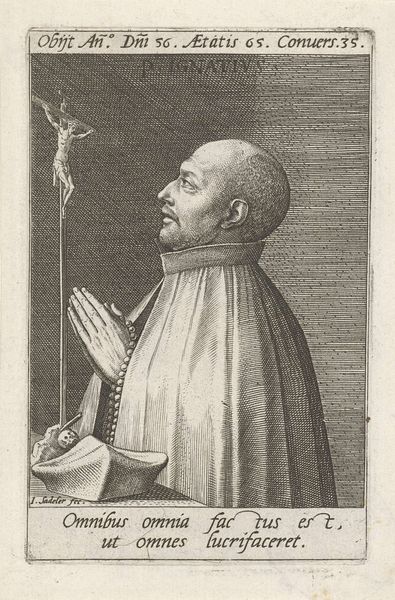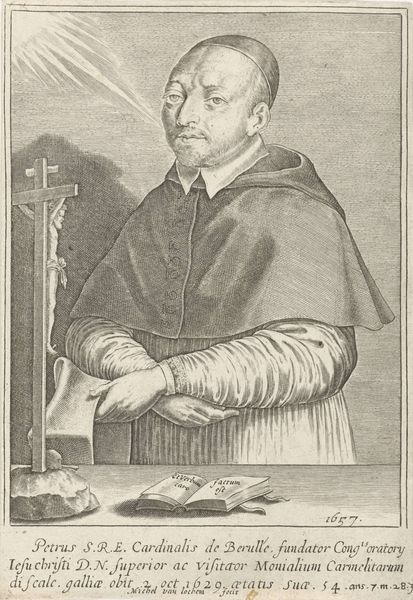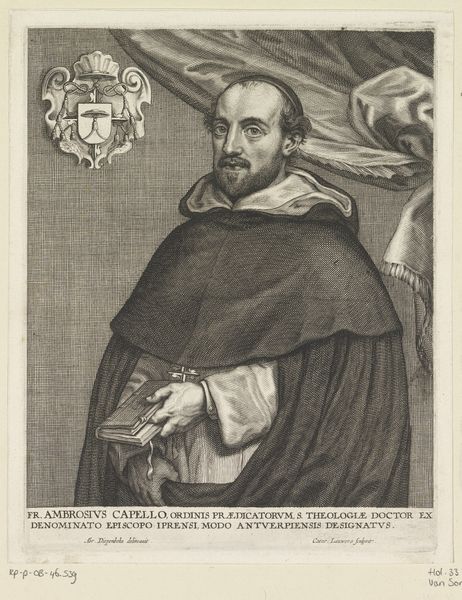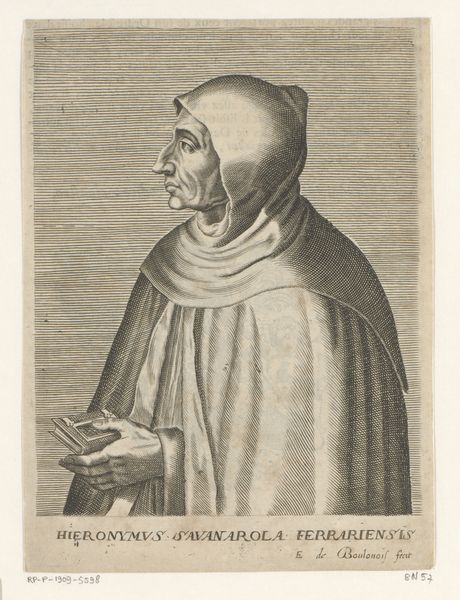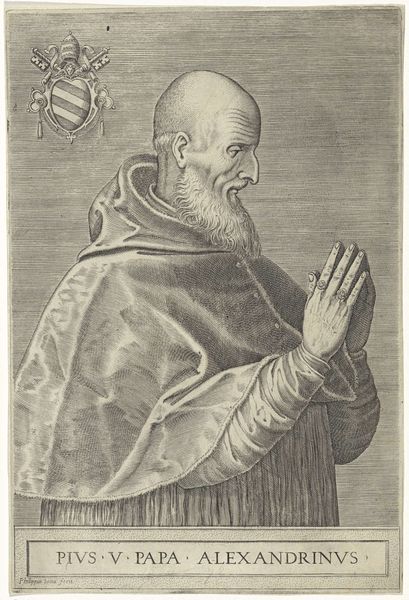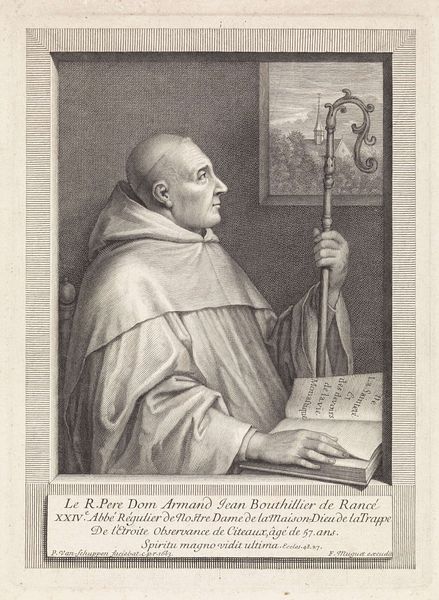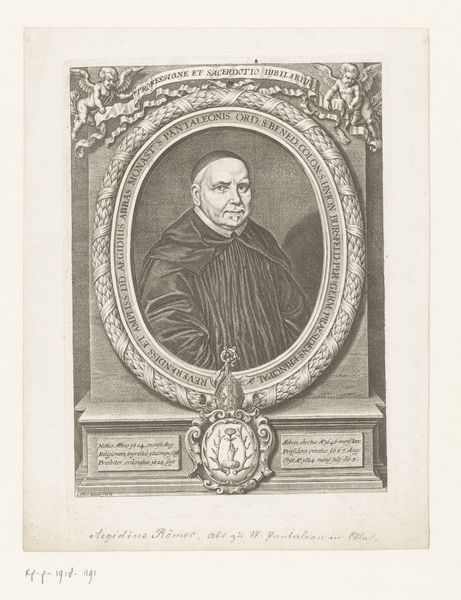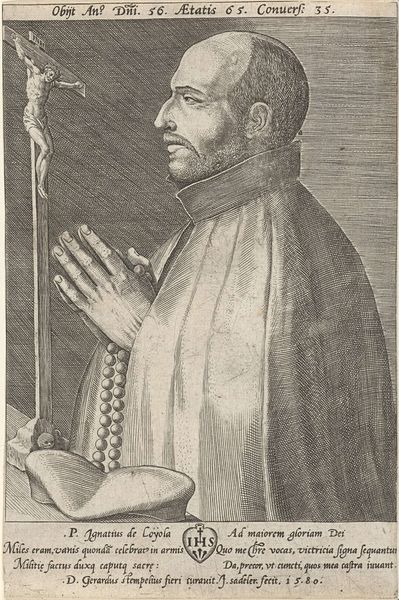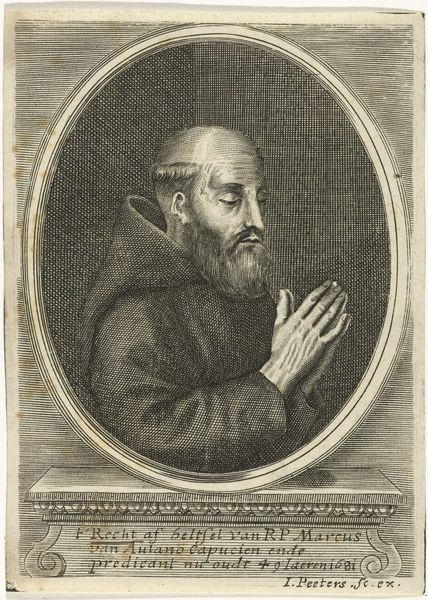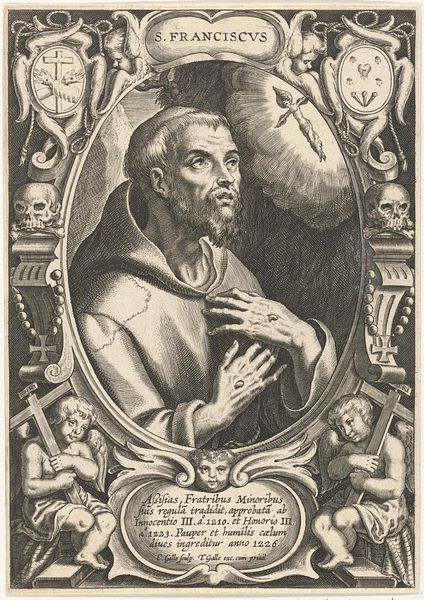
St. Ignatius of Loyola, from the series Male Founders of Religious Orders 1600 - 1610
0:00
0:00
drawing, print, intaglio, engraving
#
portrait
#
drawing
#
baroque
# print
#
intaglio
#
figuration
#
line
#
history-painting
#
engraving
#
miniature
Dimensions: plate: 6 3/8 x 5 in. (16.2 x 12.7 cm)
Copyright: Public Domain
Curator: Philips Galle's engraving, "St. Ignatius of Loyola, from the series Male Founders of Religious Orders," created between 1600 and 1610, presents us with a striking portrait of the saint. Editor: My immediate impression is the almost tangible stillness conveyed through the lines; there is an intensity achieved by the clear contrast in tones. I'm intrigued by what the physicality of labor entailed in the making of this work, from metal plate to final print. Curator: Galle meticulously employs intaglio to carve fine, precise lines. Notice how this linework defines form and texture, building depth within a predominantly monochrome palette. This engraving not only captures the likeness of St. Ignatius but also conveys a sense of piety through the precise detailing of his features and vestments. Editor: Beyond just a visual rendering of piety, I’m thinking about the social role this print fulfilled, and what kind of labor supported it? The mass production of images like these certainly facilitated the dissemination of specific ideologies; a tool that the church skillfully mobilized. Consider the paper itself; linen rags meticulously processed for its fabrication, only for religious messaging. Curator: Absolutely. And in that respect, note the structural composition—how Galle has framed Ignatius against a backdrop divided between an exterior scene and a symbolic crucifix. The careful arrangement directs the viewer's gaze, creating a narrative within a single image, while that crucifix introduces further layers of symbolic meaning, acting as a counterpoint to Ignatius's contemplative stance. Editor: It makes one consider the contrast: material object versus spiritual belief. The tools and labor, then, became acts of devotion themselves. Think about the engraver’s focus; the meditative, almost spiritual engagement with the material. It raises a lot of interesting ideas concerning faith as labor. Curator: A fascinating insight! The artist’s strategic decisions certainly contribute to the work's devotional and didactic functions, illustrating Baroque aesthetics that use realism to inspire religious fervor. It successfully transmits meaning through visual language. Editor: Galle’s piece definitely expands our perception beyond mere portraiture. Viewing art this way invites us to see both the devotion and the materials as cultural narratives interwoven with the processes, efforts, and skills used in creation.
Comments
No comments
Be the first to comment and join the conversation on the ultimate creative platform.
